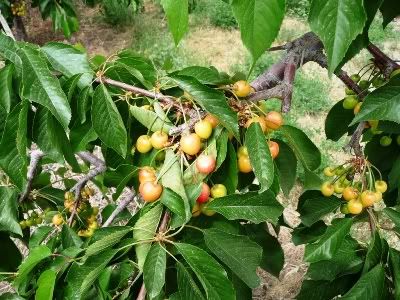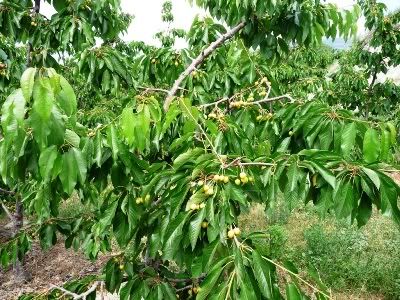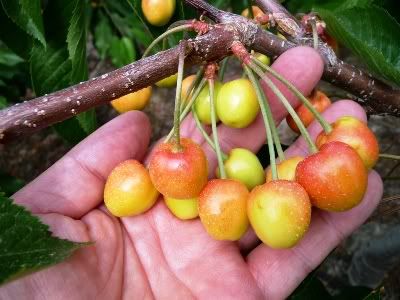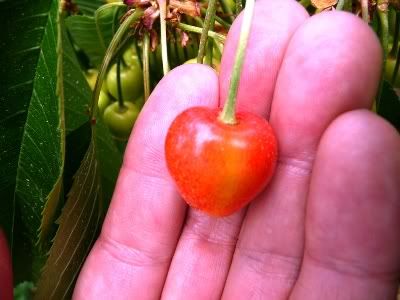
Proper Method to Slice and Eat a Mango

Haden Mango - "Most Popular"

Keitt Mango - Excellent Variety

Kent Mango - Excellent Variety

Tommy Atkins Mango - Stringy Tasteless

Thai Mango - Premium Mango

Ataulfo Mango - Asian Favorite

Mangoes ready to be Harvested

Mango Tree
Mangoes are one of the most widely eaten fruits in the world, their popularity is only surpassed by bananas. No wonder with their fantastic peachy flavor and juiciness, often referred to as "The Peach of the Tropics".
I remember as a kid literally standing knee deep in mangoes in the warehouse because we just didn't have enough room to store them properly. The entire place had the overwhelming sweet aroma of mangoes.
The best varieties sold in North America are the Philippine (Ataulfo), Haden, Kent, and Keitt varieties.
Hadens turn a deep red yellow color as they ripen and all mango varieties emit a wonderful aroma when ready to eat. Haden have the nicest eye-appeal but they are slightly stringy and fibrous.
Sometimes there is a gap in the supply chain, to fill these gaps growers plant varieties that are not necessarily very good. Tommy Atkins is a very beautiful mango, but has to be the worst variety in the world. They are completely stringy and the fibers will get stuck between your teeth. There is not much edible mango meat and any flavor is lacking. This variety has been bred for color.
Kent and Keitt Varieties
The Kent and Keitt varieties can remain almost completely green in color when they are ripe. Most consumers are turned off by their bland appearance. This is a mistake since these are two of the sweetest, best tasting varieties; and they aren't stringy at all.
Philipine (Ataulfo) Variety
Also very popular is the yellow Philippine mango also known as the Ataulfo variety. The pit is very small less than 1/2 the size of the red varieties. Ataulfos turn completely yellow when ripe and aren't stringy or fibrous at all. Widely preferred by the Asian culture and slowly taking over supermarket sales.
How to buy:
Ripe mangoes give off a nice aroma and are slightly soft when you press your thumb against the surface. A little bit of black spotting is a good sign that the fruit is ripe too. Avoid mangoes with heavy black markings or black discoloration on the skin. These are signs of chilling or overripe fruit. Mangoes do not like overly cold temperatures and sometimes in transit from farm to supermarket fruit gets chilled
Press your thumb firmly against the stem of the fruit too. Quite often this is the first place a mango will begin to deteriorate. Your thumb will sink into the flesh if the fruit is beginning to rot.
If you are unable to buy ripe fruit, it's pretty easy to ripen mangoes. Store the fruit in a warm place in a sealed plastic bag. The ethylene gas (fruit ripener) that fruit naturally produces, will trap itself in the plastic bag and speed up the ripening process significantly. Remove the plastic bag after the fruit is ripe. Do not refrigerate.
In my experience, Ataulfo mangoes chill the easiest. Inspect the surface closely for black discoloration when you are buying this variety. Sometimes the discoloration is hard to see. If present, the mangoes will be black inside.
I hope my post helped you a little bit and you picked up a few new tidbits. Please feel free to post your comments below...






























































